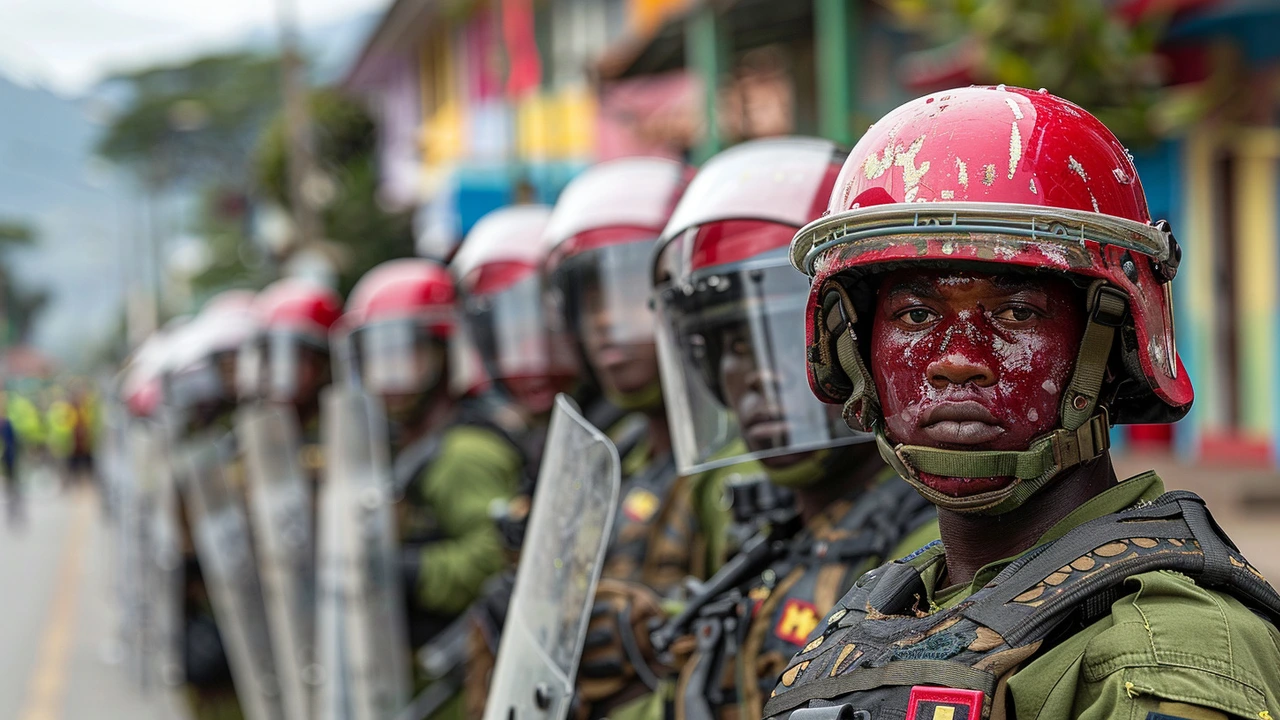A Closer Look at the Violent Protests in Githurai 45
In the bustling Githurai 45 area of Nairobi, Kenya, a wave of violent protests erupted against the proposed Finance Bill, leading to a severe escalation of events and numerous injuries. According to local reports, the protests initially began as a peaceful demonstration but quickly spiraled out of control. Approximately 6,000 protesters gathered to voice their discontent with the bill, which they believed would exacerbate their economic struggles.
The situation took a turn for the worse when the protesters began constructing a large bonfire in the middle of a major road, a symbolic act of defiance that was soon coupled with the pelting of law enforcement officers with stones. Despite numerous warnings and pleas from the police to disperse and maintain peace, the assembly grew more agitated and violent. These circumstances forced the police to take more drastic measures to control the unrest.
The Police Response
In their efforts to regain control of the situation, the police employed several means of crowd control. Reports indicate that the officers used a formidable amount of ammunition: 758 rifle rounds and 700 teargas canisters, among other forms of weaponry. This display of force was intended to disperse the crowds; however, it also led to a significant number of injuries among both the protesters and the police force. An official police report confirmed that 20 officers sustained injuries during the clash, though the extent of these injuries was not disclosed.
However, the heavy-handed police response has prompted mixed reactions from the public and officials alike. While some argue that such measures were necessary to restore order and protect property, others contend that the force used was disproportionate and contributed to the escalation of violence.

Injuries and Incidents Reported
One of the most alarming aspects of the protests was the substantial number of injuries sustained on both sides. Despite the police's efforts to control the crowd, many protesters were hurt in the ensuing chaos. The police did not release the total number of protester injuries, but notable incidents include the admission of eight individuals to the Homa Bay County Teaching and Referral Hospital with gunshot wounds. This situation has drawn considerable attention and criticism, particularly from Homa Bay Governor Gladys Wanga.
Governor Wanga expressed her disappointment with how the police managed the protests, emphasizing that the use of lethal force against civilians should be a last resort. Her sentiments have resonated with many who feel that the rights of the protesters were not adequately respected during the confrontation.
Broader Implications
The violent protests in Githurai 45 and the subsequent injuries have sparked a broader debate about the Finance Bill itself. Many Kenyans are frustrated and feel that the bill will impose additional economic burdens during an already challenging time. The government's stance, however, is that the bill is necessary for national fiscal stability and development.
This dichotomy has fueled not only the protests but also discussions in various public forums and on social media platforms. People from all walks of life are voicing their opinions, revealing a nation deeply divided over the future of its economic policy.

A Case Study in Civil Unrest
As we delve into the details of the Githurai 45 protests, it becomes clear that this incident serves as a case study in civil unrest. The initial stages of peaceful demonstration, the rapid escalation to violence, and the contentious police response are elements often seen in similar events worldwide. Such protests are typically complex, with multiple underlying factors including economic dissatisfaction, social inequality, and political disillusionment converging to ignite public outcry.
The Githurai 45 protests also underscore the challenges law enforcement faces when dealing with large, volatile crowds. Balancing the need for order with the rights of individuals to express their dissent is a delicate act, one that often leads to contentious outcomes as seen in this case.
Ultimately, the violent protests against the Finance Bill in Githurai 45 have left an indelible mark on the community and the nation at large. The injuries sustained, the extensive use of force, and the public outcry all contribute to an ongoing dialogue about governance, economic policy, and the rights of citizens.
